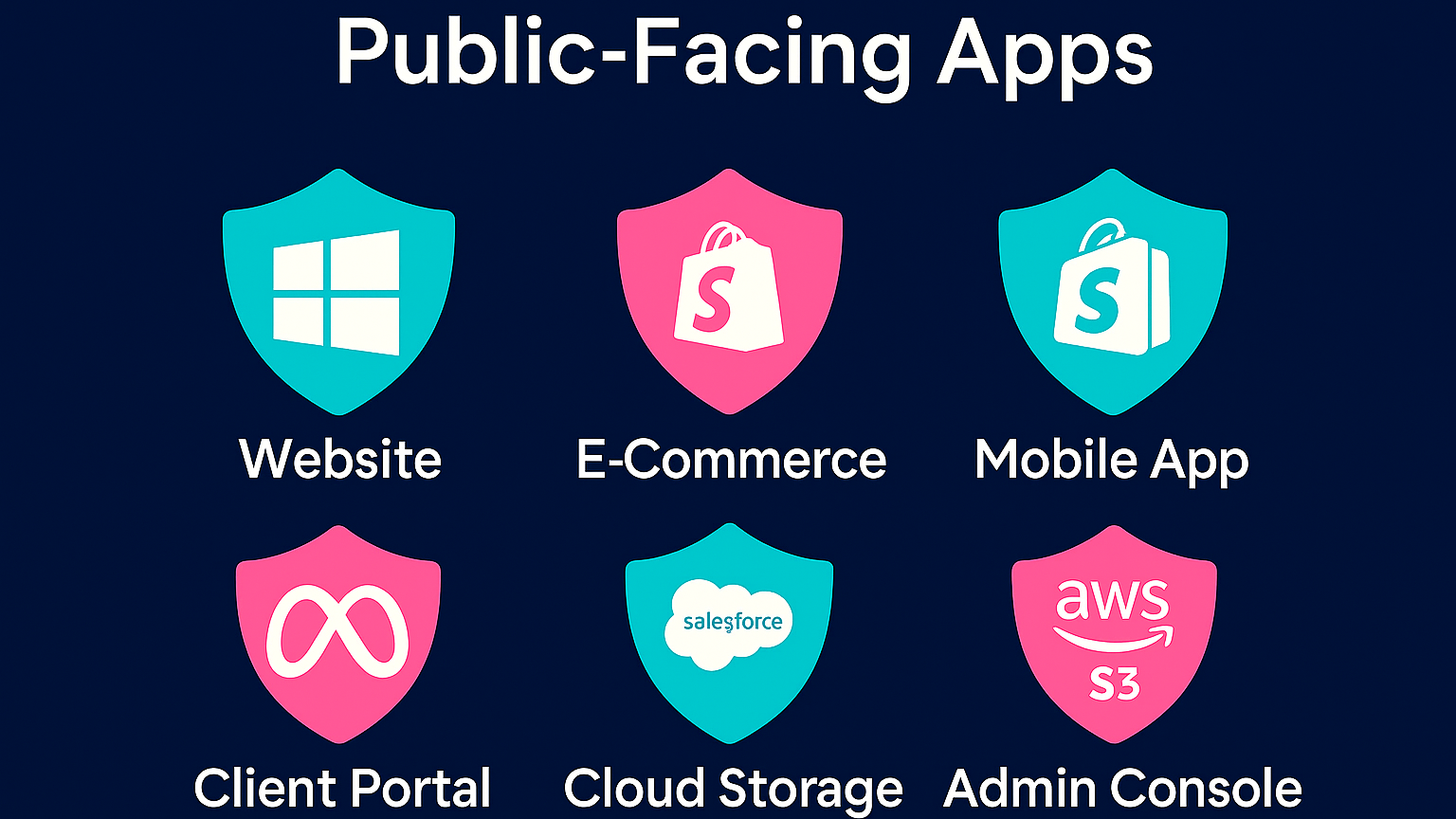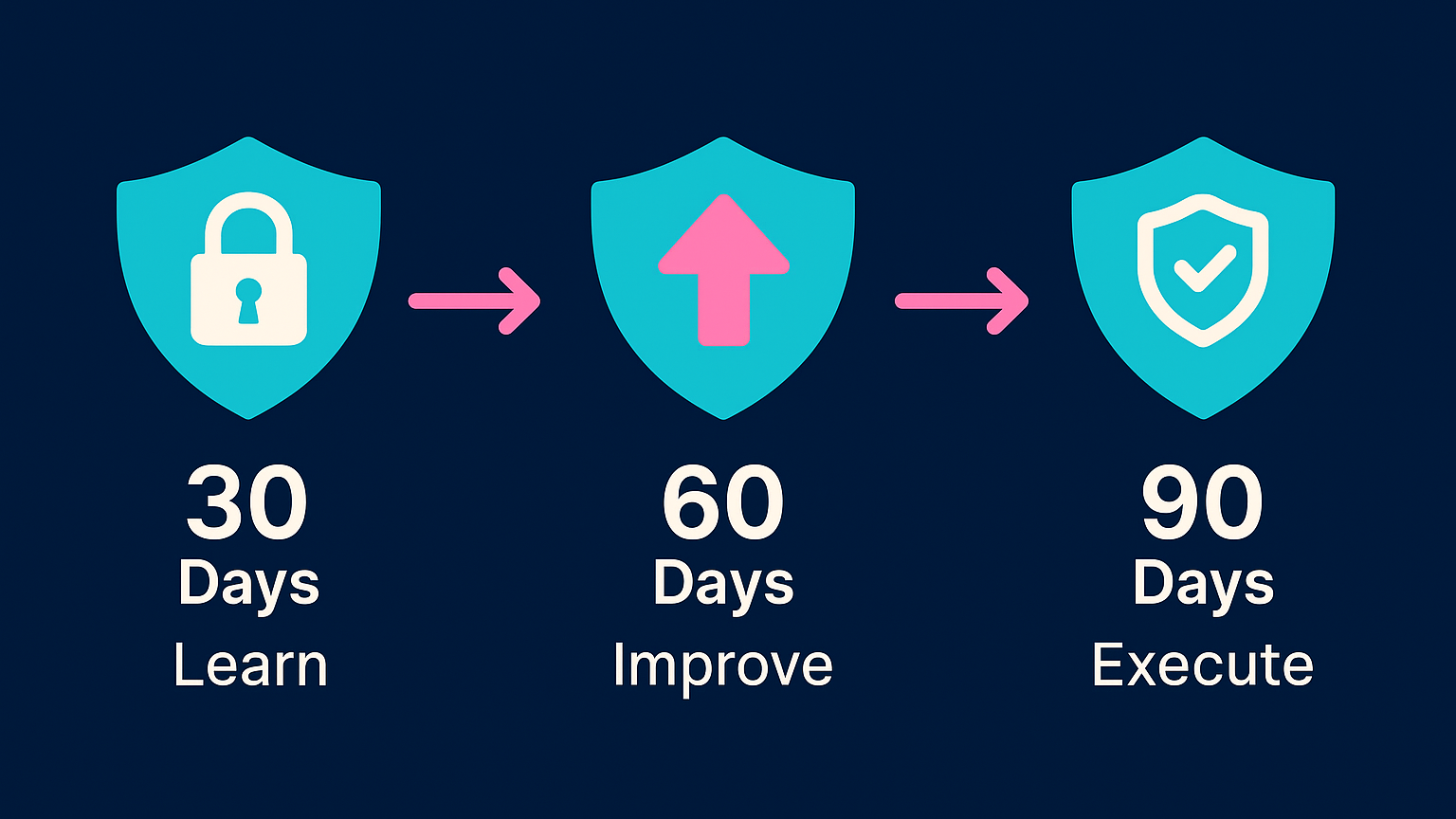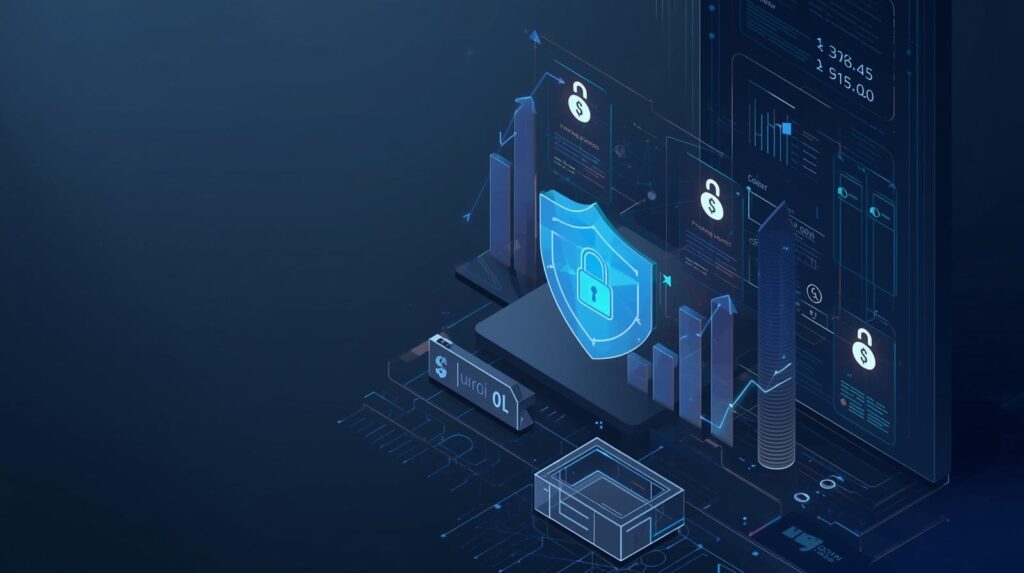In the ever-evolving landscape of cybersecurity, the application layer is where customers meet your business—and where attackers most often try to break it. Just as a fortress relies on strong gates and guarded entrances, your software needs controls that verify, sanitize, and contain every request. In this article, we’ll outline the core implementations of application-layer security and how they drive a measurable reduction in risk for Canadian SMBs.
Most breaches begin in code or integrations. A modern application perimeter—secure SDLC, SAST/DAST/SCA/IAST, secrets management, WAF/API protection, strong identity, and runtime controls (RASP)—stops exploits before they become incidents.
Why Is the Application Layer Important?
A strong application layer blocks the flaws and logic gaps that attackers exploit to reach data. For lean SMB teams, this is about shortening blast radius and reducing rework: fix classes of bugs in the pipeline, not one-off defects in production. When the application layer is healthy, your sprints aren’t derailed by emergency patches, audits go smoother, and customer trust grows because issues are caught before release.
Think of the application layer as a set of coordinated guardrails: secure authentication proves who’s asking; input validation and schema enforcement constrain what they can send; WAF and API gateways filter what reaches your services; SAST/DAST/SCA/IAST reveal issues early; RASP blocks novel attacks in runtime; and service-mesh micro-segmentation limits lateral movement if something slips through. Each control removes a class of risk. Together they change outcomes.
Modern attackers rarely open with a flashy zero-day. They reuse leaked passwords against your login page, chain a minor plugin bug into data access, or scrape business logic with automated tools. They target forgotten test endpoints, stale API keys, and unpinned dependencies. A modern application security program assumes this and fails safely: weak credentials trigger step-up MFA; unvalidated payloads are rejected by schema; suspicious traffic is rate-limited or challenged by the WAF; runtime anomalies are contained while developers fix root causes.
From a business perspective, the application layer is where you can prove improvement: defects found pre-release vs. post-release, mean time to remediate (MTTR) vulnerabilities, percent of apps behind a managed WAF, coverage of SAST/DAST/SCA, and reduction in high-risk findings sprint over sprint. Those metrics ladder up to risk reduction that boards, customers, and insurers care about.
Finally, Zero Trust multiplies application security—not replaces it. Instead of one big gate, you get many small, policy-driven checks: identity at the edge, validation in the code, segmentation in the mesh, and continuous verification in runtime. That shift supports faster releases, cleaner audits, and better alignment with Canadian privacy obligations by limiting data access to what’s necessary and logging what matters.
Read More about the 7 Layers of Cybersecurity
Key Implementations of the Application Layer
Secure SDLC & Threat Modeling. Define security requirements per feature, run lightweight threat modeling in backlog grooming, and add abuse cases to tests. Gate releases on risk, not just functionality.
Identity, Authentication & Authorization. Standardize on SSO with OIDC/OAuth 2.0, enforce MFA (phishing-resistant for finance/admin), and adopt least privilege via role- and attribute-based access control (RBAC/ABAC). Use short-lived tokens and rotate keys automatically.
Input Validation & Schema Enforcement. Validate client input server-side; use JSON/XML schemas; prefer allow-lists over block-lists. Centralize validation libraries to avoid drift across services.
WAF & API Protection. Put a managed WAF and API gateway in front of public apps and APIs. Block SQLi/XSS, throttle bad bots, enforce rate limits, and apply virtual patches while engineering fixes code. Pair with a CDN to absorb bursts and reduce latency across Canada and abroad.
SAST, DAST, SCA, IAST in CI/CD.
- SAST on every commit with quality gates; fail builds on critical findings.
- DAST on staging/nightly; tune for your frameworks to reduce noise.
- SCA to identify vulnerable dependencies; pin versions and auto-open tickets.
- IAST during QA to catch contextual flaws that static/dynamic tools miss.
Runtime Application Self-Protection (RASP). Deploy RASP to detect and block exploit techniques in production, buying time to patch without downtime.
Secrets Management. Store secrets in a vault; use just-in-time, single-use tokens; forbid hardcoded credentials; scan repos for secret leaks.
Patch & Dependency Management. Maintain SBOMs, automate update PRs, and apply emergency fixes within defined SLAs based on severity and exploitability.
Service-Mesh Micro-Segmentation & Policy-as-Code. Segment services with sidecars; keep policies in Git and review like code; enforce mTLS between services; deny-by-default east–west traffic.
Logging, Monitoring & Response. Ship app, WAF, API, auth, and RASP logs to SIEM/XDR. Alert on spikes in 4xx/5xx, unusual login patterns, and data egress. Tie alerts to playbooks that block, isolate, or force re-auth quickly.

Public App Reality (SaaS, Integrations & Customer Portals)
Public-facing apps are convenient—and risky. Threats include credential stuffing from old breaches, bot scraping, misconfigured S3 buckets, and leaky webhooks. The answer isn’t to slow releases—it’s to design for safe speed.
Start with identity and device health. Require MFA on all logins, enforce conditional access, and check device posture for admin and finance roles. Implement adaptive risk: step-up verification for impossible travel or rapid failures.
Control what reaches you. Place a WAF and API security in front of anything public. Enforce schema validation and object-level authorization (BOLA) for APIs. Add rate limiting and bot management to cut automated abuse. Use content security policy (CSP) to limit where scripts load from.
Coach practical habits. Teach developers to avoid copying code from unknown sources, use prepared statements, and never trust client-side checks. Teach staff to deny unexpected MFA prompts and to report them immediately. For third parties, rotate tokens, scope permissions narrowly, and terminate access on project end.
Tighten supply chain. Validate packages (signing, checksums), mirror critical dependencies, and scan CI runners and build containers. For contractors or low-trust endpoints, require browser-based admin portals via ZTNA so data doesn’t land on unmanaged devices.
Plan for failure. If a key is exposed, you should be able to rotate it in minutes and invalidate sessions. Keep a rollback runbook, include customer comms templates, and practice with tabletop exercises.
What “Good” Looks Like (Maturity Snapshot)
Foundational. All public apps sit behind a managed WAF; SSO with MFA is enforced; SAST/SCA run on every repo; basic DAST runs nightly; secrets are vaulted; logs flow to one place; SBOMs exist; emergency patch SLAs are defined and met.
Advanced. API gateway with BOLA protections is live; IAST added to QA; RASP protects production; service-to-service mTLS enforced; policies-as-code in Git with peer review; bot management tuned; CSP deployed; quarterly pen tests and continuous attack surface management feed tickets with SLAs.
Optimal. Full DevSecOps: security stories in every sprint; auto-merge dependency updates after tests; ZTNA replaces broad admin VPN; automated playbooks revoke tokens and quarantine services on risk; leadership sees monthly MTTR/defect trends; third-party access brokered via short-lived credentials and detailed audit trails.
Assess yourself with five questions: Do we have WAF coverage for every public app/API? Are SAST/SCA/DAST/IAST and RASP measured with trends? Can we rotate any secret within minutes? Is east–west traffic deny-by-default with mTLS? Do we ship and search app logs for 12–18 months?

30–60–90 Day Plan (Right-Sized for SMBs)
Days 1–30 (Stabilize & See). Inventory all public applications, APIs, and third-party integrations, including forgotten endpoints or test systems. Catalogue secrets and tokens in use. Stand up a managed WAF in front of every public-facing service. Enable SSO with MFA for all staff, starting with administrators and finance roles. Turn on SAST and SCA scans across all repositories and enforce quality gates. Centralize logs from applications, WAF, authentication systems, and API gateway into one searchable SIEM/XDR platform. Define an incident bridge process—who joins, in what order, and with what authority—so early alerts trigger coordinated action.
Days 31–60 (Harden & Automate). Add DAST scanning on staging environments; implement strict input validation and schema enforcement; deploy an API gateway with object-level authorization (BOLA protection) and rate limiting. Enforce mTLS for service-to-service communication in your mesh. Move all secrets into a vault and configure automatic rotation. Define patch management SLAs by severity and create escalation paths if deadlines slip. Begin training developers and product owners on secure coding practices and how to interpret SAST/DAST findings.
Days 61–90 (Modernize & Measure). Pilot RASP on critical applications in production; integrate IAST into QA pipelines for contextual vulnerability detection. Link alerts to SOAR playbooks to auto-block, isolate, or re-authenticate as needed. Generate a one-page monthly report showing pre- vs. post-release defect ratios, MTTR trends, WAF/API coverage, and blocked API abuse attempts. Schedule quarterly threat modeling sessions for major applications and at least one external penetration test annually. Begin measuring credential stuffing attempts and secret rotation times to establish baselines.
Owners & Artefacts. Product owners maintain the live app and API register; Development leads own SAST/SCA quality gates and remediation SLAs; Platform/SRE teams operate WAF, API gateway, and service mesh controls; Fusion Cyber SOC provides 24×7×365 monitoring, correlation, and response. Artefacts include: a live and regularly updated app register, complete SBOMs per application, version-controlled policy-as-code repositories, documented secret rotation runbooks, and incident communications templates for internal teams and customers. Additional artefacts to build maturity include quarterly threat model outputs, pen test reports, monthly KPI dashboards, and audit-ready compliance evidence.
Metrics That Show Real Risk Reduction
- Pre-release vs. post-release defect ratio (target >70% caught before prod)
- Mean Time to Remediate (MTTR) critical vulns (target days, not weeks)
- WAF/API coverage (% of public endpoints protected)
- Credential stuffing blocked (normalized per login volume)
- Secrets rotated within SLA (time to revoke/regenerate)
- East–west deny-by-default adoption (% services on mTLS and policy)
Reporting cadence. Present a one-page monthly brief with three trends, one exception, and one decision for leadership. Annotate spikes (e.g., campaign traffic) and protect user privacy by focusing on systems and processes.
Metrics matter because they transform cybersecurity from a cost centre into a measurable business enabler. For SMB leaders, the most powerful figures are those that show both technical improvement and business impact. For example, tracking the pre-release vs. post-release defect ratio does more than keep developers accountable—it proves that investment in DevSecOps pipelines directly reduces the volume of emergency hotfixes, unplanned downtime, and client-facing outages. Similarly, lowering MTTR for critical vulnerabilities demonstrates operational agility: not just that flaws are found, but that your business responds in hours or days instead of weeks, cutting the window of exposure.
Coverage metrics, such as percent of endpoints protected by WAF/API gateways, help boards understand breadth of protection. It’s easier to fund expansions when you can show growth from, say, 40% to 85% of public apps behind active shields. Credential stuffing blocks highlight attacker activity that never reached users—proof that identity controls save both help desk hours and reputation costs. Secret rotation within SLA is another underappreciated metric: the ability to retire and re-issue tokens quickly can mean the difference between a controlled incident and a public breach.
Finally, adoption metrics like east–west deny-by-default reflect maturity in architecture. They indicate not only a safer environment, but also a culture of security-first engineering. Coupled with a reporting cadence that distills trends and exceptions for executives, these metrics create a clear narrative: we are reducing attack surface, improving response speed, and building predictable resilience. That narrative turns technical data into board-level confidence, insurer trust, and customer reassurance.
Biggest Application-Layer Risks
Misconfiguration. Defaults left on; debug endpoints exposed; verbose errors leaking details. Assign config owners, enforce reviews, and scan for common missteps.
Weak auth & session handling. Missing MFA, long-lived tokens, predictable session IDs. Enforce SSO, short TTLs, and server-side session invalidation.
Injection & deserialization. Unsanitized input, dynamic SQL, unsafe serializers. Use prepared statements, strong parsers, and schema validation.
Broken object-level access (BOLA). IDs guessed or scraped to view others’ data. Enforce authorization at the object/resource layer.
Dependency & supply-chain flaws. Unpinned libraries, compromised packages, leaky CI. Maintain SBOMs, pin versions, and sign builds.
Secrets exposure. Keys in code or logs. Vault everything; scan repos; rotate aggressively.
For a complete defence-in-depth view, the application layer sits alongside six others in our series:
- Perimeter. NGFW, WAF, DNS filtering, DDoS, ZTNA. Application security assumes a clean edge.
- Identity & Access. MFA, SSO, conditional access, PAM. App policies lean on identity to decide who may do what.
- Endpoint & Mobile. EDR, patching, disk encryption, posture. Device health feeds access decisions and admin tooling.
- Data Protection. Backups, encryption, DLP, retention. App egress rules and tokenization reduce data exposure.
- Email & Collaboration. Advanced filtering, impersonation defence, user reporting, browser isolation.
- Resilience & Recovery. Backups, BCDR, chaos/tabletop testing. Assume failure; minimize downtime and cost.
We’ll link each article as it publishes so you can read end-to-end or dive into the layer you’re tackling next.
How Fusion Cyber Helps
Assess. We start with an outside-in scan and a rapid code/config review to find exposed endpoints, stale dependencies, and missing controls. You get a short, prioritized list—what to fix now, what to schedule, and what to monitor.
Deploy. We implement or tune WAF/API security, SSO/MFA, SAST/DAST/SCA/IAST, RASP, and service-mesh policies with clear naming, owners, and expiry for exceptions. Configurations live in version control.
Monitor. Our 24×7×365 SOC ingests logs from apps, WAF/API, auth, and runtime sensors. We correlate signals, hunt for anomalies, and notify only when action is needed—no alert fatigue.
Respond & Recover. When something breaks bad, we block sources, rotate secrets, revoke tokens, and coordinate with your team. Fully onboarded clients benefit from our financially backed Cybersecurity Guarantee—incident response, containment, and business recovery at our expense.
Co-managed, Canadian, and bilingual. We work alongside your IT team, respect data residency, and provide English/French communications and reports. You get monthly KPI briefings tied to business outcomes and audit-ready artefacts.
Ready to harden your application layer? Get started at fusioncyber.ca/get-started/ or email info@fusioncyber.ca.

Final Thoughts
Code ships value—and risk. A modern application security program brings together identity, validation, WAF/API protection, secure SDLC controls, and runtime defences to shrink exposure and stop attacks early. For SMB leaders, the path is practical: stabilize what you have, add the few controls that change outcomes the most, and measure progress with simple KPIs your board understands.
If you prioritize just three moves this quarter, make them these: (1) put every public app/API behind a managed WAF and gateway, (2) enforce SSO+MFA with short-lived tokens and secret rotation, and (3) embed SAST/SCA in every repo with defined patch SLAs. Those steps lower risk fast, support faster releases, and pave the way for a cleaner architecture next year.
Security should accelerate growth. When your application layer is predictable and measured, you can ship features faster, win audits, and keep customer trust intact. That’s the real ROI.
Featured links:
Fusion Cyber’s Solutions Overview
Fusion Cyber About Us / Team & Expertise
SAST vs DAST: Understanding the Difference
SAST vs DAST: What’s the Difference?
FAQ:
What is the difference between SAST and DAST, and why does my SMB need both?
Static Application Security Testing (SAST) reviews your source or compiled code before it runs, catching vulnerable patterns (like SQL injection, insecure authentication logic) early on. Dynamic Application Security Testing (DAST) tests the running application from the outside (black-box), simulating attacks against endpoints, APIs, and production-like behavior. Using both helps reduce risk across the full development lifecycle—SAST catches issues before code is merged; DAST catches what happens when that code runs, including configuration issues or runtime flaws. For SMBs, this combined approach helps avoid costly post-production fixes, compliance gaps, and customer-impacting incidents.
How does Zero Trust influence application-layer security?
Zero Trust assumes nothing inside or outside is automatically trusted. Applied at the application layer, it means every request—user identity, device posture, token validity—is verified before granting access. Controls like least privilege (only granting what’s needed), role- & attribute-based authorization, and short-lived tokens help enforce Zero Trust. This reduces lateral movement, limits damage if credentials leak, and ensures that public-facing apps don’t over-expose internal logic or services. All this helps SMBs maintain tighter control over data, reduce exposure, and simplify compliance.
What are realistic metrics SMBs should track to measure application-layer security maturity?
Some key metrics include:
The ratio of defects caught before production vs after (target: >70% before prod)
Mean Time to Remediate (MTTR) for critical vulnerabilities—days, not weeks
WAF/API coverage (% of public endpoints protected)
Number of credential stuffing or bot-attacks blocked (normalized by login volume)
Time it takes to rotate or revoke secrets (how often secrets rotate, how fast)
Adoption of “deny-by-default” east–west service communication (via mTLS or service mesh)
Tracking those over time gives visibility into risk reduction, helps boards/insurers understand controls, and guides investment.
How quickly can SMBs see impact from implementing an application layer security strategy?
If well planned, SMBs can see measurable improvements in 30-60 days. For example, in the first 30 days you might get SSO+MFA enabled for all users, public services behind a WAF, and central logging in place. In the next 30 days, adding DAST scans, schema validation, and securing secrets vaults typically reduce production vulnerabilities. By 60-90 days, integrating RASP, IAST, and measurable KPIs like MTTR or defect ratio can show trending improvements. The key is prioritization: pick controls that remove high risk, monitor early, iterate fast.
SITUATION
Canadian SMBs run customer-facing web and mobile apps plus APIs that tie into SaaS and partners. Revenue, brand, and privacy compliance now hinge on how safely those apps authenticate users, process inputs, and move data.
COMPLICATION
Speed and integrations expand attack surface: forgotten test endpoints, stale API keys, unpinned dependencies, secrets in repos, and bots/credential-stuffing at login. Alert noise slows fixes; broad admin VPNs and flat service meshes magnify blast radius when something slips.
QUESTION
How can leaders secure public apps and APIs—without slowing releases—so defects are caught pre-production, attacks are contained at runtime, and audits pass cleanly?
ANSWER
Gate code and shield runtime: enforce SSO+MFA and schema validation, bake SAST/SCA/DAST/IAST into CI, front apps/APIs with WAF, add RASP, vault+rotate secrets, enforce mTLS/deny-by-default, and track MTTR & pre-vs-post defects.
Our Cybersecurity Guarantee
“At Fusion Cyber Group, we align our interests with yours.“
Unlike many providers who profit from lengthy, expensive breach clean-ups, our goal is simple: stop threats before they start and stand with you if one ever gets through.
That’s why we offer a cybersecurity guarantee: in the very unlikely event that a breach gets through our multi-layered, 24/7 monitored defenses, we will handle all:
threat containment,
incident response,
remediation,
eradication,
and business recovery—at no cost to you.
Ready to strengthen your cybersecurity defenses? Contact us today for your FREE network assessment and take the first step towards safeguarding your business from cyber threats!






























































































